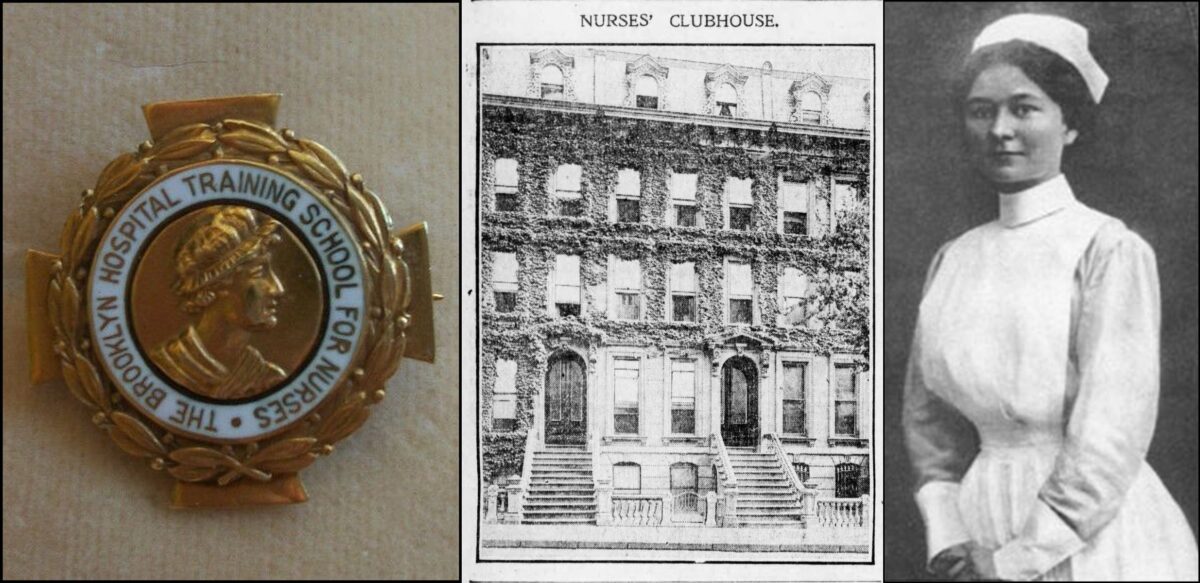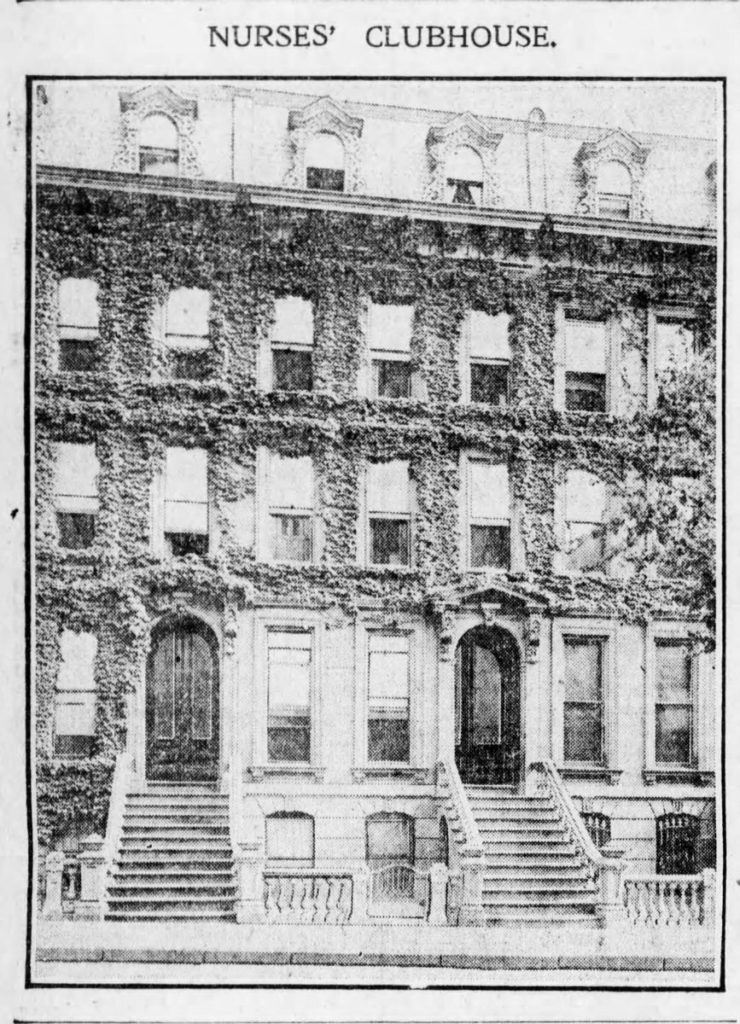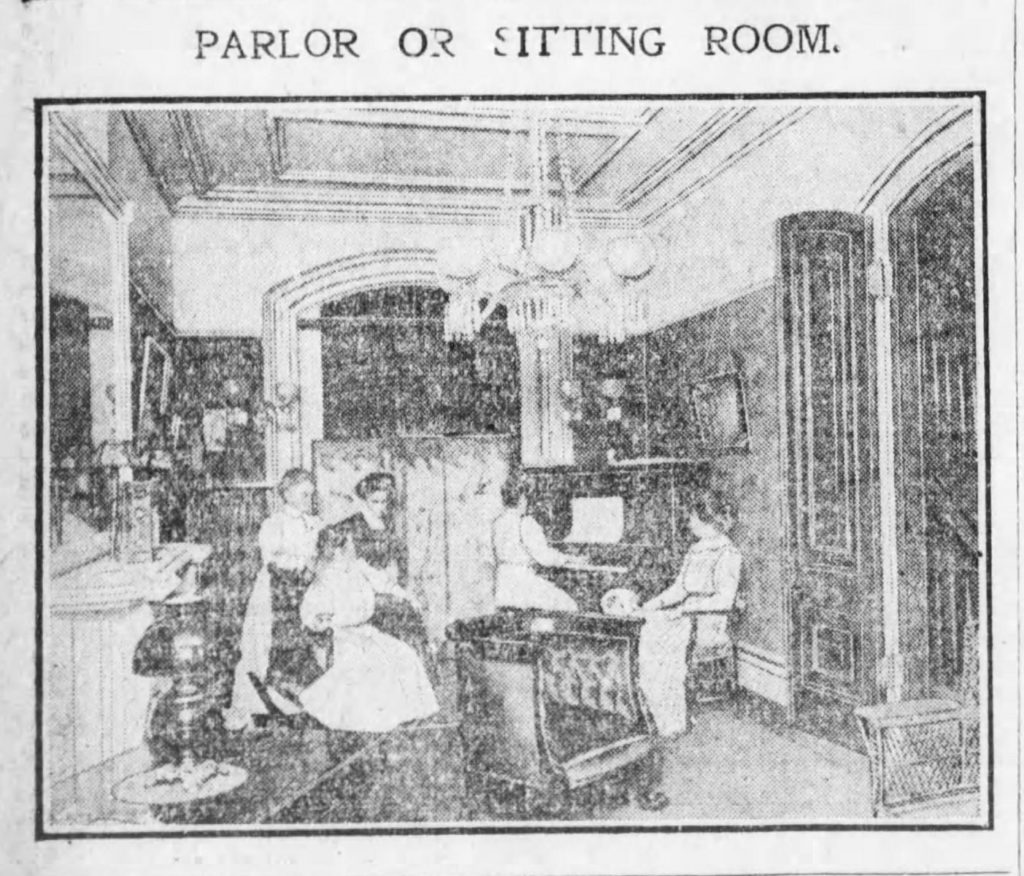THE CANUCK NURSES OF 172 LAFAYETTE (1909)

Brownstone Detectives investigates the history of our clients’ homes.
The story you are about to read was composed from research conducted in the course of one of those investigations.
Do you know the history of YOUR house?
********************************************************************************************************************************
During the late 19th century, when much of New York City’s brownstone stock was constructed, many of these townhouses were initially used as the clubhouses for any number of the organizations and clubs existent then.

There were Republican and Democratic clubs, bicycling clubs, social clubs, actors’ guilds, athletic clubs, and countless other organizations dedicated to the betterment and/or pleasure of their memberships. Those clubs with the money and the membership were able to afford to purchase – or rent – a brownstone for the use of its membership.
In 1909, at No. 172 Lafayette Avenue, a club for graduates of the “Brooklyn Hospital Training School for Nurses” – which was “always in reach of doctors” – was set up,” noted the Brooklyn Daily Eagle. The purpose of the club was as a social center and a business office for nurses, as well as a location where they could “entertain their friends.”
The Nurses Club, only in existence for a “couple of years” by that point, had – in that short period of time – made “enviable progress.”
Previously located at No. 255 Carlton avenue, it was not long before the capacity of that house was taxed to its limits. In 1909, the pressure became so great that this larger clubhouse on Lafayette avenue was opened.
“Already this is full,” noted the Eagle, “20 young women being resident members, and so many promise to apply for accommodations that it is believed that by next fall another house nearby will have to be rented as a sort of dormitory for the overflow.”
WHAT WAS NO. 172 LAFAYETTE AVE. LIKE INSIDE?
“The new club headquarters is a substantial four-story and basement brownstone house with many bedrooms. The house is decorated and repapered throughout and was all light, cheerful colorings.
“The parlor has soft green walls and some green wicker chairs, and the rest of the furningture is mahogony with green upholstering. A piano and a good library is “a guarantee of social cheer.” The books and most of the pictures in the house had been presented at various times by the alumnae.

“In the basement is a comfortable dining room furnished in oak, with a hansome Russian samovar of brass, another alumnae gift. Here the nurses can order breakfast, luncheon or dinner any day, and have their friends or guests if they wished.
“The back parlor is the office of the registrar who keeps track of all the other members. Before leaving on a case, and upon her return, each nurse notifies the registrar and an address and telephone list is kept there of all non-resident members. In this way, a doctor might be certain at any hour of the day or night of being within reach of a number of competent nurses, each of whom has the significant “R.N.” after her name, to show that she is not only of high standard, but has also passed a state board examination and is a registered nurse.
“The bedrooms are perhaps the prettiest and cheeriest rooms in the house. They have one or two broad divans, which are really specially constructed beds without head or foot, furnished with good comfortable mattresses. A tea table is a feature of almost every room, and beside all the other little conveniences, each bedroom boasts a great, roomy closet.
“Many of the girls come from Canada or other countries, and go off home in the summer for a vacation, but next fall the clubhouse will be an active place. Among the attractions promised for them will be a series of weekly teas or ‘at homes,’ when all the friends of the girls may make a more intimate acquaintance with both the nurses and their charming quarters.”
———————————————————————————————————————–
 Brownstone Detectives is an historic property research agency. Our mission is to document and save the histories of our clients’ homes. From our research, we produce our celebrated House History Books and House History Reports. Contact us today to begin discovering the history of your home.
Brownstone Detectives is an historic property research agency. Our mission is to document and save the histories of our clients’ homes. From our research, we produce our celebrated House History Books and House History Reports. Contact us today to begin discovering the history of your home.